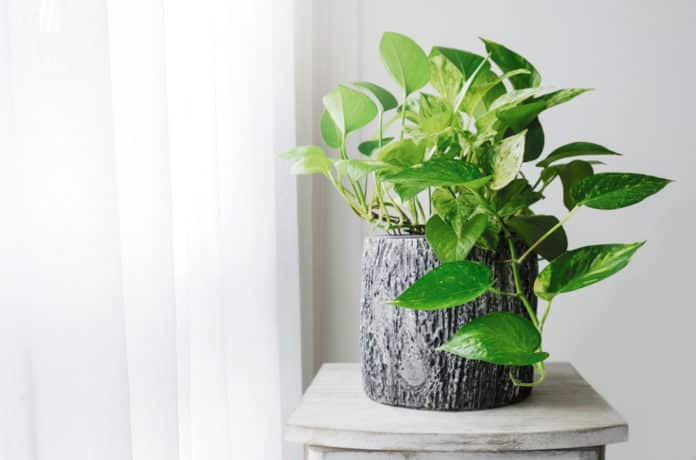Genetically Modified pothos ivy Plants Can Clean Your Home’s Air
HEPA filters are the most commonly used tool used in order to maintain the quality of the air in our houses. But fewer people know that these filters can miss out trapping hazardous compounds that are micro or nano-sized and can be potentially carcinogenic, among which chloroform and benzene top the list.
pothos ivy – A commonly found houseplant has been genetically modified by a group of researchers at the University of Washington to eliminate chloroform and benzene from the air around it. A protein called as 2E1 is expressed by the modified pothos that converts these hazardous chemicals into molecules that the plants may then use to support their own growth.
The protein 2E1 also known as cytochrome P450 2E1 occurs naturally in our liver which is turned active upon alcohol consumption but in a normal case, the human body cannot access it to process the pollutants level around us.
Synthetic versions of the gene which functions as instructions for making 2E1 was prepared, which was further introduced into pothos ivy in order so that each cell from the plant extracted the protein. Pothos ivy does not blossom in temperate climates, so
the genetically modified plants will not have the ability to spread through pollen.In an experiment to test the efficiency of the modified plants to remove pollutants from the air, two glass tubes were taken, one containing the modified plant and other had ordinary pothos plants as a control. The tubes were then filled with benzene or chloroform gasoline. The plants were kept under observation for approx 11 days. They noticed that the chloroform content in the tube containing the modified plant reduced by 82 percent, whereas the concentration in the control plant remains unaltered. So as to discover those changes in pollutant levels, the researchers used considerably higher pollutant concentrations that are usually seen in houses. However, the team anticipates that the dwelling levels would fall likewise, or even faster, over precisely exactly the identical time frame.
“People have not really been talking about these hazardous organic compounds in homes, and I think that is because we could not do anything about them,” said senior author Stuart Strand, who is a research professor in the UW’s environmental and civil engineering department. “Now we have engineered houseplants to remove these pollutants .”
Plants at the home would also need to be inside an enclosure using something to move air beyond their leaves, like a fan, Strand said. “When you had a plant growing at the corner of a room, it will have some effect in that room,” he said. “But with no air circulation, it is going to have a long time to get a molecule on the other end of the house to accomplish the plant.”
The team is now working in a direction to find a suitable protein to breakdown formaldehyde: a hazardous compound present in home air with wood goods, wooden flooring, and cabinets.
“These are stable chemicals, so it is quite tough to get rid of them,” Strand said. “Without proteins to break down these molecules, so we’d have to use high-energy processes to do it. It is so much simpler and more sustainable to place these proteins all together in a houseplant.”
This research was published in Environmental Science & Technology Journal with a title ” Greatly Enhanced Removal of Volatile Organic Carcinogens by a Genetically Modified Houseplant, Pothos Ivy (Epipremnum aureum) Expressing the Mammalian Cytochrome P450 2e1 Gene” and was financed by the National Science Foundation, Amazon Catalyst in UW and the National Institute of Environmental Health Sciences.
Source: University of Washington






























